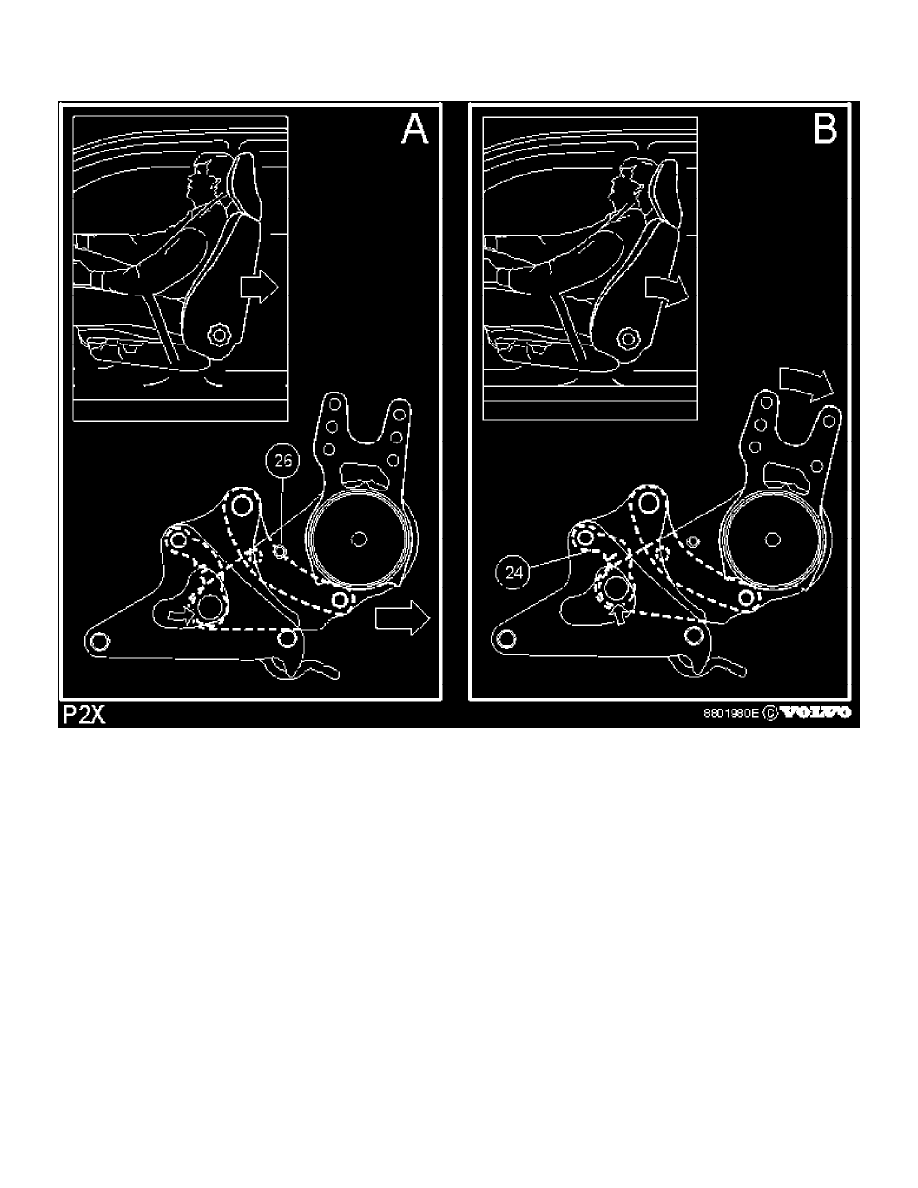S60 L5-2.4L VIN 64 B5244S6 (2003)

The deployment mechanism begins to operate in the event of a collision speed of approximately 14 to 18 km/h (9 - 11 mph), depending on the weight of
the occupant (the collision speed at which the indicator pin shears off).
In the event of a collision from the rear, the seat moves forward, thereby pressing the backrest against the occupant. The system then activates, going
through two clearly defined phases.
Illustration A
At activation the seat back moves first mainly backward in upright position, whereby the body is secured in a balanced way. The distance of this parallel
movement is approximately 50 mm (1.97 in). At activation, the indicator pin (26) shears off.
Illustration B
Instead of the occupant now being thrown forward, as in a traditional seat, the backrest now begins to angle backwards (up to 15 degrees). This is
achieved using a deformation element (a link with set deformation qualities, 24) which collapses and therefore gently brakes movement (absorbs energy
during the crash sequence). The compression limited springs distributes force evenly throughout the entire spine to avoid pressure points which often
previously resulted in S-curvatures to the spine.
Because lesser collisions from the rear may also activate the system, a repair kit has bee produced. The WHIPS repair kit consists of:
-
Deformation elements (x 2)
-
Indicator pins (x 2)
-
Return springs (x 2)
-
Link washer (x 2)
-
Pivot bushing (x 2)
-
Pivot shaft with nut (x 2)
-
Notched washer.
